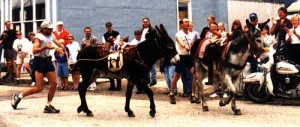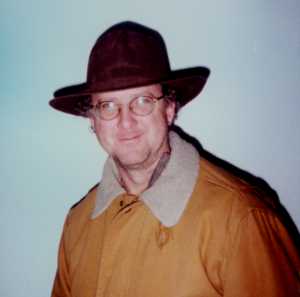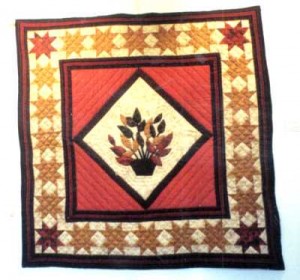Essay by Patricia Walsh
Environment – March 2004 – Colorado Central Magazine
IT’S NOT EASY being buried green, but here’s how I want it to happen:
Someone, preferably an old friend, dresses me in my oldest, softest clothes.Let’s see, how about my favorite and virtually threadbare navy blue flannel shirt and my tatty black sweat pants? If shoes seem important, hopefully they’ll go for my sheepskin bedroom slippers. Then, I’m wrapped in one of my flannel sheets.
Meanwhile, someone uses a shovel to dig a hole somewhere on the prairie — preferably in sight of the majestic Buttes of Pawnee National Grasslands out in eastern Colorado.
Finally, I’m lowered gently into the hole and dirt is shoveled on top of me. No embalming. No coffin. No cremation. No headstone. And especially no misplaced Kentucky blue grass. Just me and a few old clothes being recycled back into the earth. With maybe a layer of native buffalo grass sod on top.
You think I’m crazy? Maybe, but as John Lennon sang, “I’m not the only one.”
In fact, the idea of a natural, environmentally sound burial is catching on. To the point that last November, even Newsweek ran a brief piece about a “natural” cemetery opening in Texas. And in South Carolina, Memorial Ecosystems was founded in 1996, to create one of the first natural U.S. cemeteries.
Why would anyone care? Well, we’re just catching up with a trend in Great Britain and Europe, where hundreds of natural or “woodside” cemeteries create nature preserves. The idea is that traditional burials and cemeteries are not very environmentally friendly.
Embalming, for example, requires the use of some nasty toxic chemicals like formaldehyde. There is something bizarre about the possibility that I would have lived most of my life avoiding chemicals in my home and on my lawn, only to be pumped full of them when I croak. This is not to mention the production of those chemicals and any possible exposure to funeral workers.
As for a wood casket, it involves the cutting of a tree and the energy required to make it into a box and deliver it. On top of that, it may not rot for centuries.
Then there are the cemeteries themselves. In some cases, I suppose, they may preserve open space that otherwise would be developed. But in Colorado, the downside is that they are green grass parks on a high plains desert that is not meant to be green. This translates into lots of water, fertilizer, herbicides and extermination of wildlife such as burrowing prairie dogs.
So what about cremation? Well, remember you have to use fuel to burn a body, and there will be some air pollution to deal with. Plus there is the container, whether it be a wood casket or a cardboard box, that also goes up in flames.
My other objection to cremation is something I haven’t heard anyone else refer to, and that’s the loss of nutrients that my body would provide if allowed to melt naturally into the soil. As we used to chant on my first-grade playground, “the worms crawl in, the worms crawl out, the ants play pinochle on your snout…”
TO PURSUE MY FANTASY BURIAL, I called the Colorado Department of Health and Environment. There I learned that burial requirements in Colorado, where I live, are pretty minimal; that by law, if a body isn’t disposed of in 24 hours, then it must be embalmed or frozen. But there’s no requirement for burial (honest!) and Colorado is one of the few states that doesn’t require funeral directors to be licensed, so anyone can dispose of the body in those first 24 hours.
There is one cemetery nearby that comes close to what I want. But Mountain Wilderness Memorial Park only buries cremated remains in a forest setting. They’re considering another site for body burials, but that’s down the road. And anyway, I want to be planted on the prairie. I may have to settle for having my cremated remains scattered out by the Buttes.
The only other option I can see is to try to buy a small piece of land out on the eastern plains and have it there waiting and paid off when my time comes. I could stipulate in my will that it go to some agency or organization that would keep the land undeveloped, dressed in native grasses and open to wildlife.
Of course, I have no money to pursue such a dream. And even if the day comes when I have disposable income, I’ll probably need some partners who share my crazy idea. Any takers?
Patricia Walsh is a contributor to Writers on the Range, a service of High Country News in Paonia, Colorado (www.hcn.org). She still lives and breathes north of Denver.



